|
I am in a number of social media homeschool groups, and one question I see over and over from new homeschoolers is this: what is the best curriculum to use for my child? Here's the quick answer: there isn't any, and they all are. Here's the long answer: The best curriculum is one that you choose for your child, based on your child's developmental needs and abilities. With that being said, let's explore how to choose the best homeschool curriculum.
This post may contain affiliate links. As an Amazon affiliate, I earn a small commission from purchases made using these links. In addition, all curriculum suggestions are personally vetted by me and my daughter. Encourages Learning This may be a "duh" point but you want your curriculum to not be boring. If you get bored reading it (and I encourage you to read a couple pages, and skim through an entire book before purchasing any textbook), then your child will be bored--and you don't want that. You want the curriculum you choose to encourage your child to want to learn about the subject matter, whether that's math or history. Children have an innate curiosity about them, and the curriculum you choose should present insightful text, questions that make your child think, and the potential for additional projects, papers, or problems to solve. Any curriculum you choose for any subject should spur in your child a love for learning. The Charlotte Mason homeschool method utilizes the addition of living books, which are engaging books that bring the subject alive. Any time you supplement any curriculum you purchase using living books, you add a deeper level of understanding into the subject matter. SUGGESTIONS: I really like the history curriculum from Notgrass History, due to the amount of possible projects and other assignments. I also really like Rabbit Trails Homeschool's history curriculum, because it's literature based using living books (take 10% off with our coupon code H1C). Rabbit Trails' science curriculum is top-notch, as well. For Bible studies, I love Not Consumed's studies, which combine biblical truth with practical teachings (I also love their student planner!). Everyday Graces Homeschool has beautiful Charlotte Mason-inspired studies. Teachability Not only should the curriculum encourage a love of learning for your child, but it should also be fun to teach. When you learn as the teacher along with your child, you're more invested into the curriculum and in your homeschool. If the curriculum is too hard to teach, you're not going to enjoy it. I have used curriculum that had great information, decent workbooks, but were tedious to teach. On the other hand, I've used old-school textbooks that had the text in smaller chunks with questions to reinforce retention. If you use textbooks that have a large amount of text, I suggest you break it up into chunks for your child, and if the workbook doesn't have questions for retention for that section, make up your own questions. I've done this many times. Realistically, you are the teacher. so you can create questions, you can download worksheets, whatever you want to do. There are many resources that you can use to supplement your curriculum and help in teaching, such as the following:
SUGGESTIONS: Schoolhouse Teachers makes it easy to teach due to the scopes and sequences are laid out for each course. Many courses are taught via video, and others lay out the courses for you. Plus, if you join as a Silver member, you gain many benefits, such as the AppleCore program. This online program gives you the ability to track attendance, grades, report cards, and transcripts. I have also used old school textbooks that I purchased at a significant savings from Ebay.. Ownership Before the start of a new school year, before we buy curriculum, my husband and I always ask our daughter what she wants to learn in history and science. This ability to choose provides a sense of ownership and buy-in with your child. If your child wants to have a say in his or her education, by all means, let your child have that freedom, but within reason. Often, especially for science, all it takes for buy-in is to involve your child in science labs. A good source for labs (and homeschool curriculum) is Home Science Tools. For both science and history, field trips are often incredible ways to make the subjects come alive for your child. Allow your student have some say in field trips, but always follow up with the field trips by asking what your child learned or have them complete this field trip report. Developmental Needs and Abilities In choosing your homeschool curriculum, one thing you must do is take into account your child's developmental needs and abilities. You can use the math placement tests from Teaching Textbooks to discover what exact level your child is on, and adjust accordingly. Sonlight also has placement tests, not only for math but for reading and language arts, as well. If your child has special needs, you will want to teach him or her based on their developmental level -- not based on age or technical grade. You can teach subjects on different levels, for example, if your child is 12 years old and technically in the seventh grade, but because of her ADHD or his autism is developmentally in the fourth grade in language arts and tenth grade in math, teach the child on the developmental level. If your child is in the ninth grade by his age but developmentally in the third grade, teach him in the third grade. In this case, I would also strongly consider adding life skills to his curriculum and not force the academics too much. Meet his needs where they're at, but don't frustrate him--or yourself. Catalogs While you're on Sonlight's website, go ahead and order their catalog. Do an Internet search for "homeschool curriculum provider" and order all the catalogs you can. Using these, you can get an idea of scope and sequence, what they offer, what you can offer in your homeschool, and what electives exist. Apologia has free homeschool resources on their resources page, such as a homeschool curriculum planning guide, podcasts, and videos to help you in the homeschooling journey. Homeschooling is a very individual thing, and you can't have a one-size fits all approach to it. What works for my homeschool (and therefore is my "best" homeschool curriculum) may not be a good fit for your homeschool, and therefore would not be your "best homeschool curriculum." The best thing to do is to examine first why you're homeschooling, what your goals are as a homeschool and for each individual child, and choose curriculum based on your family's lifestyle and goals. For my family, we travel a good bit for my husband's wheelchair basketball team (you can see why he's in a wheelchair in this book) so we do a good bit of roadschooling, or homeschool on the road, so an online curriculum wouldn't work for us.. You may have a very strict homeschool budget, and need to find online resources that would be easy to teach, encompass all the subjects, yet be affordable (you can totally do that, too!) and can't buy a total big-box curriculum. There's nothing wrong with buying workbooks that you find at discount stores or at teacher supply shops and using those. Be sure to read my blog post on homeschooling on a budget! No matter the homeschool curriculum you choose, remember than you are homeschooling-- the emphasis should be on the relationships you have with your children and building them up while learning. Learning doesn't just happen with books; it happens while you're cooking or cleaning the house, while your husband engages with your child and teaches her how to change the oil in the car, or how to make doctor appointments. It's about doing life together. All my best, Terrie (C) 2022 Terrie Bentley McKee ALL RIGHTS RESERVED
1 Comment
There are a myriad of different reasons why people choose to homeschool their children: there is the economic benefit of avoiding high private school fees; there is the convenience of scheduling schooling around other family activities; if a child has special needs that aren't being met in public school; or you don't agree with public schools' curriculum choices.
One of the most important benefits of homeschooling is the flexibility with which you can tailor your child’s education. It is a well known fact that every individual has individual needs, and homeschooling allows you to create a learning environment that suits your child particularly. When you involve your child in that process, you create buy-in and ownership of your homeschool within your child. When you undergo homeschooling, it is important that you have a clear curriculum, mindset, and a plan to execute it. But within that plan, you should understand that you have a tremendous amount of flexibility: there are many different ways that a child can learn something, and many different things to learn in a given subject. One of the best ways that you can ensure a high level of learning retention is to encourage your child to take a personal interest in his or her education. Although this may seem obvious, many people growing up who went though a traditional school system will probably agree that their education was received in an authoritative way: schooling and your education was something that was done to you, not with you. When homeschooling, however, you can take advantage of the almost unlimited flexibility at your disposal and let your child take a more active role. While you can’t, obviously, let your child do whatever he or she wants education-wise, you should always explain to him or her a given education plan, and see what he thinks. Each year in the spring, my husband and I ask our daughter what she would like to learn about in history and science the next school year. While she doesn't have the flexibility to choose what she learns in math or language arts, she enjoys choosing what she learns in history and science, and therefore has more buy-in. For example, when you start your school day, outline the plan for the day with your child. Depending on his or her age you can also explain the reasoning behind the plan. If there are any things the child seems averse to doing, try and take them seriously. You should not, of course, avoid certain subjects or activities simply because your child doesn’t like them. You should, however, ask your child why he or she doesn’t like something in the day’s plan, and to suggest alternatives. In many cases you will be pleasantly surprised by what your child comes up with, and be able to incorporate it into the day’s work. As much as possible, you should have a list of alternatives in mind for assigned activities. The idea is to try and think of alternative activities that accomplish the same task. If your child protests against a certain exercise, then, you can offer them an alternative. This can be extremely effective in getting your children to learn material that they dislike. Oftentimes the child simply has to feel that he or she is more in control of the situation to enjoy it. Even though you are ultimately controlling your child’s education, by granting them small allowances and choices, while still sticking with the larger picture, everybody wins: your child feels he is doing what he wants to do, and you are still teaching your child what you want him to learn. Buying homeschool curriculum can get expensive in a hurry. There are ways that you can purchase curriculum on a budget, however. Here are some tips and resources to show you how.
Affiliate links are used on this site. As an Amazon Associate, and affiliate of other companies as well, I earn from qualifying purchases. Read more in our disclosure. Deciding what our child needs in curriculum is the first step. Accessing scope and sequences of grades and curriculum can be done through curriculum company websites or their catalogs. Many companies, like Teaching Textbooks, offers free math placement tests so you can determine exactly what is your child's level. Apologia offers this free curriculum planning guide. The second step is determining a per-child curriculum budget. Don't be afraid to splurge on hardback, reusable books if they will be used by younger siblings. If you decide to use spiral curriculum or workbooks that are generally written in, either copy the pages or have the student write out the problems on notebook paper, leaving the workbooks free from marks. This way, younger siblings can use them (or you can sell them at either curriculum fairs or consignment shops). Curriculum Fairs / consignment shops This is where a simple search on the Internet with your town or city name comes in very handy. Search your town, with adding "homeschool curriculum fairs" or "homeschool curriculum consignment shops" in the search bar. You can gain some really good curriculum at fairs and consignment stores, but make sure you look through the books. I once paid for a science workbook that looked good for the first few pages, but then as my daughter worked through the workbook, the name "Ryland" was on every single page, and crossword puzzles were already completed. Buyer beware: just look through every page in workbooks , especially. Thrift stores You may need to go often, but you can find some bargains in thrift stores' book sections, especially if you're willing to keep an eye out for curriculum to be used later. I once found a high school economics books at a thrift store and snatched it up. Sure, my daughter's going into the seventh grade, but it's certainly something she can study as a senior in high school, and it was less than $2! Thrift stores are also good places to buy literature or living books. If you happen to find a set of encyclopedias, buy them; even though we have the Internet at our fingertips, there's something to be said about reading and using an encyclopedia for resources. Bargain stores You know the type: they're not exactly big-box stores, and they have seconds of products most of the time, but if they have a good book section, you can find some great workbooks, literature, and sometimes curriculum there. Homeschool supplies like crayons, paper, scissors, are often good deals, too. EBay We often think of Ebay as being a source for when we need a weird part for something (I'm currently in the market for a missing lid to my husband's favorite rice cooking pot). However, I have purchased many older school books for my daughter. As a homeschooler who refuses to teach Common Core, math textbooks from the early 2000s are perfect. Instead of a hundred dollars, last year I spent a little over $5 for Laura's math textbook. Be sure, in the Ebay search bar, you specify what you're searching for, such as "grade 6 math textbooks," or "grade 4 spelling textbooks." Use the link in bold above to access Ebay's math books, and you can search for other things, too. Curriculum Providers Since the summer is curriculum buying-time, you can often find some good deals on curriculum and/or shipping. Apologia is offering free shipping on orders over $150 right now. Notgrass History offers first-rate history textbooks for all grade levels plus a great deal of general homeschooling resources. One curriculum creator, Rabbit Trails Homeschool, is launching new curriculum on July 1. She is having a party inside of her Facebook group, Relaxed Homeschoolers, The Rabbit Trails Way. During this party, she will be sharing all of the new releases, there will be giveaways, sharing new freebies, and there will even have an exciting flash sale opportunity. Don't miss this -- make sure you join the group today so you won't miss it. In my own store, you can buy my newest study, Gospel Grammar, at 22% off with the coupon code Summer22 (along with everything else in my store, as the sale is storewide). Gospel Grammar is a Bible study about grammar, and a grammar study about the Bible. You can find curriculum creators on Facebook (just do a search for one you're looking for) to access deals they have going on. Amazon Amazon is not who we usually think of when it comes to homeschool curriculum, but they have a ton of curriculum available, in addition to supplies, computers, printers, and laminators.. Right now they have a lot of brand-name curriculum on sale for upwards of 20% off. Be sure to access this direct link for homeschool curriculum. Budgeting Once you have a list of subjects you want to do with your child, make a list of curriculum providers. Some providers provide all-in-one curriculum packages that include everything. A lot of that depends on your child. If your child is at grade 4 in math but grade 6 on everything else, ask the curriculum provider if you can switch out grade 6 math for grade 4, for example. Or, you can tailor-make an eclectic curriculum for your child using many different sources. Once you have a list of curriculum and/or subjects, you can use this handy homeschool curriculum budgeting tool to help you keep track of costs. Don't forget to count music lessons, sports, and other extracurricular activities in that, as they also can count for homeschool (handy info to have for attendance records!). Websites I have a number of free or low-cost websites I use a great deal in homeschooling my daughter. These websites either supplement her curriculum by way of worksheets or online games, or I use them as curriculum. I pay to use Education.com so I can utilize their word search and crossword generators for spelling. This website's annual plan is under $10 a month; paid monthly, it's $15.99 a month. I don't know about you, but $119.88 is a lot better than $191.88. I use this website every single day--and Laura loves the educational games that I can assign to her to complete. Disclosure: I am not an affiliate of Education.com. Another website I use often, that I am also not an affiliate of, is Teacherspayteachers.com. You can search for free worksheets, and have a wealth of worksheets at your disposal, or you can pay per download for more expensive worksheets, lessons, projects, and other resources. One website of which I am proud to say I am an affiliate, is SchoolhouseTeachers.com. Right now, through June 22, they are having a membership sale of less than $16 a month. Members receive a great deal of benefits, including a printed magazine, free access to hundreds of full courses and unit studies, record keeping resources, lesson plans, scope and sequence information, and a full curriculum for every grade. My daughter wants to do unit studies for science when we start back up September 1, and we're going to do that using SchoolhouseTeachers.com's incredible science unit studies. Plus, all members become automatic affiliates, so if you really like it, and share your affiliate link with your homeschooling friends and on social media, you can make some money, too. Homeschooling can be an expensive endeavor--but it doesn't have to be. With a little creativity, asking the right questions, and looking for deals, you can find curriculum to teach your child without spending a ton of money. Don't forget to search for "homeschooling" on Facebook Marketplace--you will be amazed at the deals you can find there. Happy Homeschooling! ~ Terrie (C) 2022 Terrie Bentley McKee ALL RIGHTS RESERVED
In a summer of rising fuel costs, beating boredom while you either take a break from homeschooling or have a lighter homeschooling load can become a very expensive proposition. Here are some fun, budget-friendly summer activities for homeschoolers.
This post may contain affiliate links. When you purchase using these links, I receive a small commission that helps provide for this website and homeschool ministry. Thank you for your support. Backyard Campout Gather your tent, bedding, snacks, flashlights, fire pit, s'more making materials, and pitch your tent in your own back yard for a campout. Share stories from your childhood with your kids, eat s'mores, sit around a campfire, and either sleep outside or stay out really late and sleep inside. Either way, you're making memories with your children--memories they will always remember. Catch Fireflies Arm all your kiddos with mason jars, with holes punctured in the lids, or this cute bug jar, and let them catch fireflies outside. Encourage your kids' innate thirst for learning with this free science lesson about fireflies from Rabbit Trails Homeschool. This free lesson on fireflies is a favorite among Rabbit Trails users. Learn all about fireflies with amazing books, create your very own firefly that glows, and have some amazing summer fun learning together! Be sure to check out other incredible lessons Rabbit Trails Homeschool has to offer--my daughter loves them! Water Play In the hot days of summer, nothing is more refreshing than water play. If you have access to your own pool, add a bunch of pool noodles and floats to have a great time (keep all those toys corralled when you're not using them with this pool toy storage and equipment holder. This holder can also be used to keep pool and outside toys organized when not in use if you go to a neighborhood pool, too. If you're like me, and don't have access to a neighborhood pool, most cities and towns have community pools that, for a small fee, Pools are not a requirement for water play, though. You can get an elaborate sprinkler like thisginormous, inflatable dinosaur one that stands six feet tall (!!!) or hook up a simple garden sprinkler to a water hose like this one, and let your kids jump through the water. If you live in an apartment with a patio or balcony, set out a pot of water on a towel on the patio or balcony, add measuring cups or plastic bowls, and let your child pour and splash to his or her heart's content. Reading On days when it's really hot outside, and you just don't want to spend the gas money going to the library, grab some books that haven't been read yet, or in a while, from your own book shelves. Encourage your child to turn off the screens and explore other places using the magic of books. Use this fun, summer-themed log to keep track of reading times, and when all the popsicles are colored in, let your child pick out a movie or a board game to play--or another book to read! Family Game Nights One of our family's favorite activities is playing board or card games together. The cool thing about games is that they're great learning tools--and the child doesn't even know he or she is learning! Our favorite board game, "Empire Builder," is incredibly hard to find, these days, sadly, but the closest thing to it is called "Empire Express." In this game, for 12 years old and up, players create competing railroad empires by drawing railroad tracks with crayons upon an erasable board. A player wins by utilizing a network of rail lines to acquire and deliver goods efficiently to accumulate the largest personal fortune. We've found, though, that wet erase markers instead of crayons work best. Other games that are favorites in our house are "Clue," "Settlers of Catan," and playing gin rummy with a standard deck of cards. There are so manyversions of "Clue" that there's something for everyone. Other favorites are "Hi Ho! Cherry-O," "Candy Land," and "Twister." Any games you have in your house are good games to play--the important thing is to play them and enjoy each other's company. Neighborhood or Nature Walks It's often too hot in the heat of the day to go for walks, but in the early morning, it's a great time to simply go for family walks either in the neighborhood or for nature walks in the woods (stay on paths so you can be careful of snakes). Later in the evening is also a good time to go for walks. Don't just walk, though--use the time to talk, catch fireflies, pick up interesting rocks, and chat with neighbors. If you take your dog on a walk during the afternoon or early evening, please be aware that the pavement can be blistering hot to a dog's paws. If the temperature outside is 85 degrees, asphalt in the sun can reach over 140 degrees! Protect your pup's feet with these dog boots for hot pavement. Family walks cost nothing, but they often encourage the best talks, and have incredible learning opportunities. Sandcastles Sandboxes are easy to make: buy a simple kiddie pool and add play sand. Cover it with a small tarp, held down with boards, bricks, or even logs from the firepit stash at night to prevent rain from dampening it or cats from using it as a litter box. Using various sizes of plastic food containers from either the cabinet or the recycling bin, and a small container of water, your child can create the most incredible sandcastles. Yes, you can purchase more elaborate sandcastle forms that kids (and adults!) alike would get a lot of enjoyment from as they build turrets, bricks, towers, and other castle structures, but you really don't need to. You can also make a sandbox by using a small tent add play sand on the inside of it. With the rain fly attached and it zipped up, there's very little chance of the sand being spoiled by rain, insects, or cats. Forts My daughter loves building indoor forts. Utilizing sheets or blankets, cover a dining room table with them and drape it over the side. Let the child design it to his or her heart's content. Add a thick quilt on the floor and a pillow, a flashlight, and some books, you may even catch your child reading in the fort--or even taking a nap. Forts can be as simple or as elaborate as your home or sanity will allow. Catch a Game Many communities have either church or neighborhood baseball or softball leagues that play in parks. You don't have to spend money to see a good game with pro baseball when you have games happening in nearby parks. Some parks even have concession stands; if they don't, make sure you pack a cooler with drinks and snacks. There are many fun, budget-friendly activities you can do in the summer and continue to learn, as learning doesn't just happen at a desk or in a book. Explore your own county and check out places that you don't normally visit, like off-the-beaten path antique stores, county museums that may not have websites (so you wouldn't know about them in your field trip planning), or use the time to tackle some projects around the house as a family. Most of all, have fun! - Terrie (C) 2022 Terrie Bentley McKee ALL RIGHTS RESERVED It's that time of the year: birds are singing, flowers blooming, pollen on the air...and homeschoolers fight homeschool with every fiber of their being. Yet, you as the homeschooling parent, want--need--them to finish something related to homeschool. Your house is a mess, your kids aren't listening to you, and you are overwhelmed.
Homeschool doesn't have to be overwhelming but it often can be. Distractions get in the way of both parent and child, and the academic part of homeschooling can quickly feel like a chore. Here are some ways to manage an overwhelming homeschool life: Have a change of scenery As I write this, my daughter is beside me on our deck. We're sitting on a bench together, papers and books and laptop before us on a table. Birds are chirping, our chickens are clucking, the duck is quacking, and I expect Carl, our rooster, to crow any moment. Carolina blue skies are overhead, dotted by big fluffy clouds. It's a glorious day--and we are homeschooling. She's working a word search for spelling. The thing is, we just started--and it's already 12:03 in the afternoon. It's nearly impossible for us to start in the early morning hours, so we start when we can: after animals have been fed, breakfast eaten, and clothes changed. Sometimes, a change of scenery, like coming outside on a gorgeous day, can help a great deal. Take materials to the park with a big blanket, or go to the library. Sit at a library table and, quietly, do the lessons. Minimize distractions The biggest distraction for my daughter are screens. Her tablet, her borrowing my phone--they all have a tendency to suck time and motivation away from her. One thing we're going to do, starting tomorrow, is to institute a new family rule: no screens until academics are finished and chores are done. I say tomorrow because this is an ongoing issue and, frankly, one I just came up with. When you're overwhelmed, you have to come up with things as you go to see what works and what doesn't. Curriculum Here me out: you don't have to finish the curriculum. If academics are hurting your relationship with your child, stop the academics. Take a couple weeks off and do fun things: plant a garden, visit museums or parks, rearrange the child's room--do things that are out-of-the-ordinary. Go for long nature walks and talk about what you see. Then, come back to academics a little at a time. Not even public schools finish entire math books. The purpose of homeschool is to cultivate a relationship with your child and institute a love of learning. If learning has become a form of torture for you both, it's time to give it a rest. Try something new, like just reading the history book aloud. Do science projects. There's a caveat to this, though: if you have a high school-level student, it's important for the sake of the transcript that curriculums do get finished. Have a heart-to-heart with your student and just lay it out: you must push through the curriculum to graduate high school. A lot of life is simply pushing through. We need to make sure our children understand that. Take time for yourself It's one thing for the students to be overwhelmed; it's another when the homeschooling parent gets overwhelmed. Know that it's perfectly okay to reach out to another homeschooling family and ask if they want to trade time. You invite another group of homeschooling children to your home, with their academics they're working on, and all the kids work on their individual tasks at your table, while the visiting kids' mom gets a much-needed break. Maybe she'll get her hair done, or nails, or just have a couple hours for a mental health break. Then, she watches your kids while you get a little break. Get organized Take a week off academic homeschool and make it a homeschooling project to organize parts of the house that are cluttered and overwhelming. If you use your dining room for homeschool, as I do, try to figure out a way to store homeschool materials when they're not being used so you can actually use the table to dine on. If you are blessed enough to have a dedicated homeschool space, take a day or two to organize and redecorate it--particularly before starting a new grade or homeschool year. Biblical characters battled being overwhelmed, too Christian homeschoolers often think that they're the only ones to get overwhelmed. Just because a biblical character was close to God doesn't mean they didn't battle being overwhelmed. David, Jeremiah, Elijah--even Jesus in the Garden of Gethsemane were overwhelmed at some point in their lives. We can learn from them and how they handled being overwhelmed. Having an active and constant prayer life, being in the Word, and surrounding yourselves with praying friends can all help you in being overwhelmed. Everyone faces a season of being overwhelmed. I feel like I am a chronic overwhelmer--to the point that I needed help, so I wrote a book about how biblical characters handled being overwhelmed and what we can learn from them. I learned so much during the writing of this book! Overwhelmed: Biblical and Practical Ways to Manage a Crazy-Busy Homeschool Life can be found in my online store (autographed) or non-autographed books are available on Amazon. Balancing homeschooling, parenting, discipleship, home management, and life can be extraordinarily tricky. In this mercifully brief book for overwhelmed homeschool parents, I give biblical and practical strategies on how to manage a crazy-busy homeschool life. Using Scripture and practical suggestions, I encourage parents who are caregivers and homeschooling, and parents who are homeschooling children with special needs. In addition, I show how biblical figures handled stress, and applies those lessons to real-world issues homeschoolers face. Please know that you are not alone! Every homeschooling parent feels overwhelmed at times, and more in some seasons. It's important to recognize when you're reaching that point, and to do something about it. In Christ, Terrie (C) 2022 Terrie Bentley McKee ALL RIGHTS RESERVED The moment a child is born, parents start homeschooling. A child learns from the very moment of birth, and what the parents do impact the child on every level. "Formal" homeschooling, in which a parent makes the intentional decision to not send a child off to a public or private institute of learning, can begin at any time, and often parents consider homeschooling during the preschool age, or between two and five years old.
Homeschooling children ages two to five, or even six, can be wonderful in that you as the parent get to instill the love of learning in your child, and you are the one to see the first light-bulb moments of understanding. I know when I first saw my own child understand that C-A-T made the word that represented our kittens Henry and Rosie, that was a glorious moment. But, homeschool at this stage (between two and five years old) shouldn't be formal, as in, workbooks and tests and heavy curriculum. Here are six tips you can do to homeschool your preschooler and kindergartener: Read, read, read The very best thing you can do as a parent is to read to your child. Starting as a baby, building those building-blocks of words, sounds, and language is crucial to a child's development. A preschooler and kindergartener finally begin to understand that the words on the page correlate to the sounds coming out of their parent's mouth. Ask questions about what you're reading; even though your child is not reading, they are listening, and you can work on comprehension through the active reading of passages. Not sure what books to read? For babies and toddlers (especially those who are apt to tear things), board books are just fine. As children age, move on to larger picture books (but skip the chapter books for now -- they need the visual stimulation of pictures). Don't have the money for books? Visit the public library, or ask for books for the child's birthday and Christmas presents. Visit thrift stores, public library book sales, or yard sales to find books. Even when the child ages through elementary and middle school, continue reading--it's a wonderful bond-building activity. Intentional Play All those toys you have for your child? Get a few out and get on the floor with your child, and play with him. Make race cars zoom around the rug, or make animal sounds from figures, or play with dolls. Interact with your child, saying things like, "What sound does the elephant make?" or "What makes the car go?" Ask your child what dress the doll should wear today. Be imaginative with your child and ask questions--see what answers you'll get. Go outside and blow bubbles and play tag. At this age, children learn by playing. Get age-appropriate board games and play with your child. Children learn turns-taking, sharing, colors, counting, and many more important developmental steps through playing. Now, one may ask, "How am I to get on the floor and play when I have a baby to take care of, too?" Put the baby on a blanket beside you, on the floor. Put a couple diapers and wipes nearby, for easy changing access, and play. The point is to be intentional about playing: ask questions, ask your child's thoughts on what a toy should do next, and point out things like the color of a truck or what sound a toy makes. Introducing Letters and Numbers For children who show an interest in letters and numbers, buy some alphabet and number magnets for the refrigerator. Don't just stick them on and expect your child to learn them by osmosis. Show them the letters, in order, and be intentional with it. Sing the ABC song--in fact, buy a kid's CD and keep it in the car, to put in and sing while you're driving down the road. I used several different types of books to read to my children growing up that were fun ways to introduce letters, including Chicka Chicka Boom Boom, Chicka Chicka ABC, and Dr. Suess's ABC. These are classic books that are fun to read over and over, and use to interact with your children. If your child is not interested in learning about letters and numbers, continue reading to him. Eventually, it will come. Children learn at their own rate and level, and a cookie-cutter approach will not work on children. All children learn at their own levels and rates, and forcing it only embitters them and makes them hate learning. Be patient! Explore Allow your child to explore his or her own world. As much as you play intentionally with your child, allow your child to have the freedom to play on his or her own. Put out paper and crayons on a kid-sized table and see what your child draws. If he draws a sun purple, don't correct him--there will be plenty of time for correction later. Allow your child to explore and learn, and this is often hard. Often, the lessons that stick the most are the ones learned the hard way: if a toy is dropped and broken, or if a finger is pinched in a cabinet door, or if the kitty scratches or hisses because his tail is pulled. Often, a child will learn through natural consequences. Talk Talk with your child. If you're changing a soiled pair of underwear for a child who is learning to use the potty, take the child by the hand and dump the poop off the underwear and into the toilet, telling her, "that's where the poop goes! Into the potty!" Talk with your child. Explain that we wear rain jackets when it's raining, or we put up our toys at certain times of the day. Announce that it's snack or meal time. In effect, narrate your child's life for him or her. "It's morning! Sun is shining, time to wake up!" "Time to change our clothes! Your head goes through this hole, your arm in that sleeve," etc. Narrate what you're serving for breakfast. If a child has a learning disorder, such as autism or sensory development disorder, although the child may have a difficult time responding back, continue to talk/narrate. Continue to read and play. It's important to do so, even -- especially -- if a child has a developmental delay or disorder. Writing As for writing, you want to wait until the child can feed him- or herself with a spoon or fork and demonstrate decent fine motor skills. Then, introduce a big pencil that is used for preschoolers and kindergarteners, and let the scribbling commence! Pour flour onto a cookie sheet, and show how to write letters in it. Buy a dry erase board, as little or as big as you want, and allow your child to write letters on it. Don't try to force the learning, as it will happen. The older the child becomes, increase the structure and discipline of writing appropriately. Use the alphabet books mentioned above and trace each letter as you read them, and have your child mimic you. Remember, each child learns differently and on his or her own time schedule. No child exits the womb quoting Shakespeare or knowing her ABCs. Read to your child, allow play (both with you and on his own), and encourage listening skills by explaining everything that's happening. Most of all, pray -- over your child, with your child, and by your child. In Christ, Terrie (C) 2022 Terrie Bentley McKee ALL RIGHTS RESERVED "Socialization" is one of the most common fears for any family contemplating homeschooling their child. This is the wrong word and concept, though. Dogs and cats are socialized. Humans are taught how to interact with others, ideally, their peers of the same age and socioeconomic background, and others who are not like them. Homeschooling can seem like isolating your child, but it really doesn’t have to end up like that. In fact, because of the nature of homeschool groups and activities, homeschoolers often successfully interact with a wide variety of people. Children can still develop their "socialization" skills in many other ways if they don’t go to public or private schools. Kids tend to learn their best socialization skills from activities they do with their own families, not from following the in-crowd at school. In fact, when my daughter was in public school for 2-1/2 years, we constantly heard that she spent too much time socializing. When I'd visit her school at lunchtime, kids were often told where to sit, when to talk, and quite often, her class had lost the privilege of socializing. When homeschooling, don't get caught up in the lie that your homeschooler won't be "socialized." If anything, that's a good thing. For my daughter, I want her to grow up to know how to interact with a wide variety of people. Here are five ways to do just that. Family Activities A good place to start is to plan a lot of activities that the whole family can do together. Playing board games as a family teaches teamwork, patience, taking turns, and how to be a sore loser (or a humble winner). Doing outside activities as a family encourages family dynamics and working together toward an end goal. Those are good things to teach; after all, you are rearing a man or woman, not raising a child. Your child won't be little forever and he or she needs to know how to work with people. Field Trips and Parks Field trips to sightseeing areas or just spending time at the local parks can allow them to interact with other kids for brief periods of time while you monitor their activities. When my daughter and I go to the park, she often organizes the other kids there in games of tag or hide-and-seek. Field trips are not just educational academically, but they also offer opportunities to interact with adults and children of all ages. Encourage your child to take the lead on talking with the ticket clerk or the gift shop attendant. Neighborhood They can also develop their peer-to-peer social skills by mingling with other kids that live in your neighborhood. They can develop friendships with other kids even if they’re homeschooled and their peers are not. Don't dismiss making friends in your own neighborhood. If you don't want your child to go to other homes (I know I don't), you can set your yard up as "the" place to be. A trampoline, swingset, yard games, and other activities can be child magnets. Keep a supply of child-friendly snacks and drinks at the ready and you're set. Invite the parents over, too, for a cookout, and build community and friendships across the board. Local Groups Socialization doesn’t just occur within the walls of a traditional school. Allow your child to join local groups for kids their age. Trail Life for boys and American Heritage Girls are popular faith-based groups for children to join and develop lifelong friendships. They learn new things and do activities together as a group. Some churches have youth groups children can join as well. Or, your child could participate in little league baseball, take swimming lessons, or participate in some sort of homeschool sports team. We recently signed our daughter up to take tennis lessons at a local recreational club operated by the city. Although we count this as PE, since she's interacting with other girls a little younger and older than she is, it helps her make friends and interact with people while doing something fun. In Public Teach your children to happily answer questions about homeschooling to other people they meet. Sometimes other kids can be so inquisitive that they want to ask many questions, and this helps break the ice for both of them - allowing a healthy friendship to develop. Our public library has a homeschool day once a month which is great because it enables other homeschoolers to get to know one another and talk. Encourage your child to ask for help from adults in stores who are wearing nametags. You need to focus on enhancing your children’s socialization skills, but never force them to find friends. The only way this can successfully happen is if it happens naturally. The more forced it is, the more likely your child won’t be able to make close bonds with his or her peers. To help develop your child’s socialization skills, just make sure they’re able to interact with peers their age from time to time. Even being around grown-ups can help foster a positive attitude and social skill that far exceeds that of kids their age. Check out the new podcast:Gratitude is an essential value children need to learn at a young age, but how exactly do you teach it? Teaching gratitude does not have to be hard at all! Here are 16 super fun activities that will teach your child to be thankful for everything in their life.
Read Books There are so many amazing books that will teach your child about being thankful. Reading books brings so many great benefits, and your child will love the chance to snuggle up and read books with you! Some of our favorites include:
Make a Gratitude Chain or Tree Gratitude chains or trees are fun and easy crafts to help your child share what they are grateful for. You can make a chain for every day in November with something they are grateful for to hang around their room. Or, create a tree and add a leaf every day with something they are thankful for. With these, you can go as long as you want. Dinner Table Gratitude Tradition Make it a tradition to go around the dinner table each night and share one thing you were thankful for about today. It can be big or small. Not only will this help them find things to be grateful for, but it will also show them there is always something good about their day, which in turn teaches them to be optimistic. This gratitude tradition will also keep your family close as you talk and share about your days while eating dinner. Competition There are so many fun ways to have gratitude competitions. You can see who can write down the most things they are grateful for in one minute. Make it as short or as long as your child needs. You can also see how many you can name throughout your day. Make these competitions fun and light, nothing too serious. Write Thank You Notes Teach your child to write thank you notes from an early age. They can paint and draw the cards themselves to build their creative side as well. Writing thank you notes will teach gratitude and manners to your child as they learn they need to share their gratitude with others. Rainbow Kind of Days This is one that will hopefully stick with your child forever. Children need to know those bad days will happen, but it doesn't mean the entire day has to suck. Have what is called a "rainbow kind of day." Use this phrase when you have a bad day. Talk about your day and the struggles you went through. Then, tell your child about your rainbow. Just like all storms, during the storm, everything is nasty. But in the end, there is always a beautiful rainbow. This will help your child focus on the good and share their bad times with you. Bedtime Routine If you want to make gratitude a habit for your child, include it in your bedtime routine. Every night before bed, have them share what they were grateful for that day. Make sure you share what you were grateful for that day -- and be sure to include your child! Gratitude Jar Find an empty jar and have your child decorate it however they please. Then, put notes of things you were grateful for inside the jar every day. On December 31, as part of a New Year's celebration, empty it and read through everything you wrote! Gratitude Journal A gratitude journal is a great way to teach your child about being thankful. Get them a journal, or have them make their own. Then try to make it a habit to write in their journals every single day. This will create a habit and help your child learn the importance of keeping a journal. Thankful for Senses Sensory play is always a great way to teach something! You can do this in so many different ways. You can create a sensory bin filled with things your child loves and have them explore and be thankful for each item. Or you can ask your child something they love for each of their senses:
Gratitude Bingo Gratitude Bingo is not a daily activity but rather a week or month-long event. Give your child a bingo card with gratitude prompts inside each square. You can make your own or get one online. Some square examples include:
Thankful Pumpkin Instead of carving your pumpkin, write out all the things your entire family is grateful for. Try to fill the pumpkin with your writing! I use a white pumpkin to do this in the fall and it's a cherished part of our fall decor. Scavenger Hunt Children love scavenger hunts! You can make this as easy or as hard as your child needs. Make hints about things you are grateful for to have them look for until they find the prize. Or, let them make their own scavenger hunt and give them prompts. For example, “Look for something you are grateful to wear.” Grateful Photo Challenge For those children who love to take pictures, have them go on a photo challenge! They can use your phone or a kid's camera. You can choose to give them a list of things to take pictures of or let them find 20 things they are grateful for to take a picture of. Drawing or Painting While it may seem so simple, children love a chance to draw or paint freely. Don’t lead this activity; let your child draw whatever comes to their mind. Process art is much more beneficial than having your child copy a cute turkey you saw on Pinterest. Be sure to hang up your child’s artwork and share how thankful you are for it! Gratitude Walk Many children have a lot of energy that they love to use, so go on a gratitude walk! This can be a simple nature walk, but talk about things you see, hear, smell, and touch that you are grateful for during your walk. These 16 gratitude activities will help your child learn this important skill in a fun way! Learning through play is more beneficial and lots more fun for kids of all ages! What other ways to you like to teach your child about gratitude?
Homeschooling your kids and taking control of their education is such a wonderful and rewarding feeling. It can also feel very overwhelming! There is a lot that comes with homeschooling from the curriculum, educational resources, and supplies that can make it difficult to keep everything together and organized. Not to worry though, here you will find some homeschool organization tips to help you.
Color Coding Color coding can be done in a couple of different ways. If you are homeschooling more than one child, assigning each child a color can help you to know whose work you are looking at, and who forgot to put away their supplies. If you are only homeschooling one child you can color code by subject. Having your homeschool supplies color-coded can make finding what you need when you need it easier for you and your student. These color-coded labels can help you do that. Clipboards Clipboards are inexpensive, versatile, and they can be invaluable tools when it comes to organizing your homeschool. You can put your daily or weekly schedules on them and they can also be used as portable workstations for when you or your student don’t feel like being stuck at a table or desk. Digital Organization Chances are that some of your homeschool curriculum and resources are digital so you will need a way to organize all of those resources too. Start by creating a folder for each subject on your computer, those folders can be further subdivided into topic and grade level so that you find exactly what you need when you want it. Portfolio You will want to keep a portfolio of each of your homeschool children’s work through the school year, but where are you supposed to keep it all? Grades and unit tests can be stored as computer files if you prefer, or you can print end-of-the-semester grades and put them in a binder for each child. Add this Annual Record Portfolio, and you'll have all your child's grades at your fingertips. What about all of their completed projects you ask? You probably don’t have room to store them all, particularly if you have more than one student. You can, however, document their completed projects with pictures that you print and add to their portfolio, or simply keep them as a digital archive. Library Box If you are a homeschooling family, and you aren’t using your local library you really should be. There are so many amazing resources that you can check out and use as part of your curriculum, or just for fun, and it’s all for free! The trick is to make sure that the borrowed library items make it back to the library and don’t get lost in the books and resources that you already have at home. That’s where the library box comes in, all you need is a milk crate or storage box where all of the borrowed materials can stay when they are not in use to make sure they are returned. Hot tip: I use this collapsible trunk organizer for a library box. It keeps the books in one place in the house, and it's easy to transport in my van back to the library. It folds down so we can take it in the library to re-stock. Plus, when it's not holding books, it's great for groceries. Bookshelves Bookshelves can be used to hold more than just your textbooks and workbooks, and they are relatively inexpensive. Adding a bookshelf to your living room or homeschool room is an easy way to help keep your homeschool organized. Purchase totes, baskets, or canvas storage bins that will fit comfortably on your bookshelf. Make sure that each tote, basket, or bin is clearly labeled so that you know what belongs inside of it. If you have younger students who are just learning to read pictures on the outside of the boxes can be very helpful. A Place For Everything You know the old saying “A place for everything and everything in its place," well, this is true for organizing your homeschool as well. Have a designated spot for your textbooks, workbooks, paper, art supplies, learning manipulatives, and anything else that you might be using as part of your curriculum. Having a designated spot for each item makes it easier for you and your student to put things back when they are done, and that makes it easier to find them the next time they are needed. If you find that you have more things than you do space it might be time to purge some of your materials or put them in storage until you need them. Shoe Organizers Over the door, shoe organizers can be used to store so much more than just your shoes, and it is a convenient way to keep some of your smaller items together. The organizers with clear pockets are great because you can see what’s in them quickly. These pockets are a great place to store index cards, markers, crayons, glue, painting supplies, pencils, and flashcards. You can also use them to hold your office supplies and any cleaning supplies, like disinfectant wipes, that you may use in your homeschool room. Having your homeschool materials organized means that you can focus on the important parts like teaching and learning what works best for your learner. Everyone’s homeschool organization will look different based on the number and age of students they have, and the space that they have in their home. Do you have any amazing homeschool organization tips that you would like to share? Comment those ideas below! If you’re planning on homeschooling your child, you’ll need to learn the many styles of homeschooling that’s available so that you can decide which would work best for your family.
Eclectic Homeschooling - This type of homeschooling works under the philosophy that you should enhance your child’s everyday activities and emotions, using them to insert appropriate lessons to teach them a subject. Classical Homeschooling - This is a method of learning that goes all the way back to the middle ages. It works on the philosophy that the younger children begin with learning the basics of reading, writing and arithmetic. Once that’s mastered, they move on to the next stage, which consists of grammar. It involves compositions and collections. Then they move to the dialect stage, where the serious study of reading and writing and arithmetic comes in. Instead of learning grade-appropriate materials that public schools use, the child learns in stages. The Charlotte Mason Method - This is one of the most popular methods of homeschooling today. Charlotte Mason developed this style to enrich a child’s education through nature, literature and real life experiences. Although a child must still be taught with a regular curriculum according to your state’s laws, they can learn to love learning with nature lessons, poetry understanding and much more. When learning is more enlightening for a child, they’re more apt to absorb the information then when they’re given a bunch of facts to memorize. Montessori-at-Home - This type of homeschooling allows a child to learn their fundamentals through the use of their environment and by using all of their senses - not by memorizing facts from a textbook. Montessori was a woman who studied children for many years and developed the philosophy that one should control the environment and not the child when teaching them skills. The Moore Formula - This method is divided into three separate parts. It’s a way of teaching with studying for a determined amount of time each day based on the child’s needs. It involves manual work and entrepreneurship, which teaches a child to accept responsibility. Lastly, it involves home or community service, which builds character within the child. The Reggio Emilia Approach - This method teaches preschool-aged children to learn through exploration and not by having the fundamentals forced on them. It teaches that children have a built-in sense that allows them to learn what they need in this world at their own pace. The Structured Homeschooling Approach - This is a method of homeschooling that is similar to the curriculum seen in public schools. This approach teaches lessons at a grade level depending on the student’s age and where they are at in their academics. The Unit Study Approach - This approach to homeschooling allows a child to learn a subject as a whole instead of just reading chapters in a textbook. A child learns a subject through use of reading, science, math and other methods to learn that topic. Children can retain almost 50% more than the traditional study techniques applied in public schools. Unschooling – This is a more laid back form of educating your child. Basically, your son or daughter will lead you in their educational needs. You’ll discover what to teach them based on their own interests and goals, not by abiding by a strict curriculum. Waldorf Homeschooling - This method works on the philosophy of teaching through use of spirit, soul, and body. The method teaches that the child will best learn by exploring their environment. By analyzing your child’s learning abilities and your comfort-level with each type of instruction, you’ll be able to find a method of homeschooling that fulfills both you and your child during the educational journey the two of you take together. |
AuthorTerrie Bentley McKee is an author and speaker who homeschools her youngest daughter. Married to her husband Greg, they have four children, all of whom have special needs of varying degrees. Terrie is a follower of Jesus Christ and tries to glorify God in all she does. To read more about her testimony, click here. Affiliate LinksHomeschooling One Child is a participant in the Amazon Services LLC Associates Program, an affiliate advertising program designed to provide a means for sites to earn advertising fees by advertising and linking to amazon.com. Check out our YouTube channel!Check out our podcast!Please pin!Archives
January 2024
Categories
All
|
- Home
- Blog
- Podcast
-
Resources
- Teach What is Good Devotional
-
Convention Resources
>
- Homeschooling a Teen with Autism
- Tips on Creating a Disability-Inclusive Church
- How to Teach Your Exceptional Child about Faith
- Homeschooling Preschoolers with Autism
- How to Pick Developmentally Appropriate Curriculum for your Autistic Child
- Overwhelmed
- Homeschooling One Child
- Life Skills Chickens
- Strategies on Homeschooling Kids with Special Needs
- About Us >
- Vlog
- Homeschooling News
- Printables
- Special Needs
- Curriculum
- Encouragement
- Home Management >
- History
- Science
- 25 Days of Advent
- Courses
- Store
(C) 2023 Terrie Bentley McKee ALL RIGHTS RESERVED
- Home
- Blog
- Podcast
-
Resources
- Teach What is Good Devotional
-
Convention Resources
>
- Homeschooling a Teen with Autism
- Tips on Creating a Disability-Inclusive Church
- How to Teach Your Exceptional Child about Faith
- Homeschooling Preschoolers with Autism
- How to Pick Developmentally Appropriate Curriculum for your Autistic Child
- Overwhelmed
- Homeschooling One Child
- Life Skills Chickens
- Strategies on Homeschooling Kids with Special Needs
- About Us >
- Vlog
- Homeschooling News
- Printables
- Special Needs
- Curriculum
- Encouragement
- Home Management >
- History
- Science
- 25 Days of Advent
- Courses
- Store



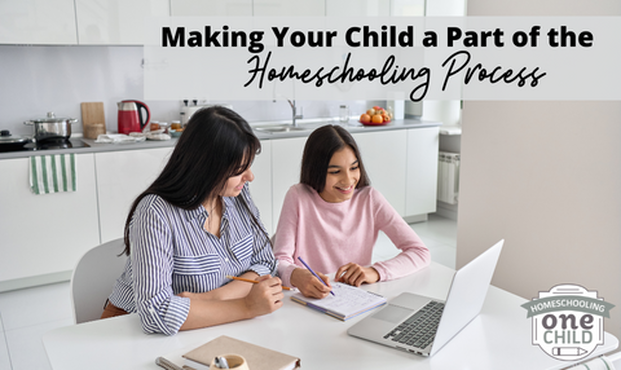



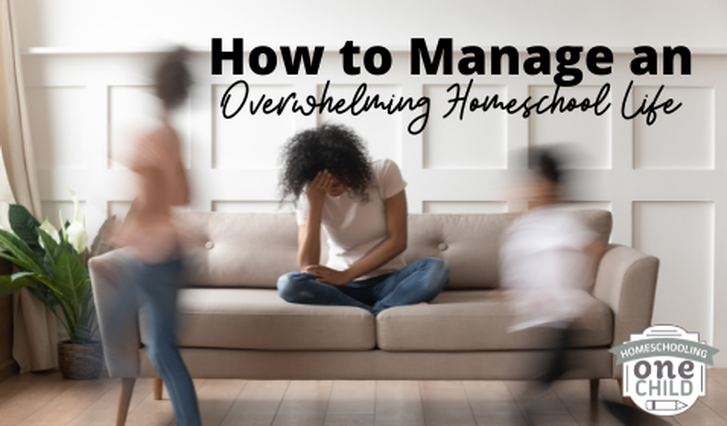
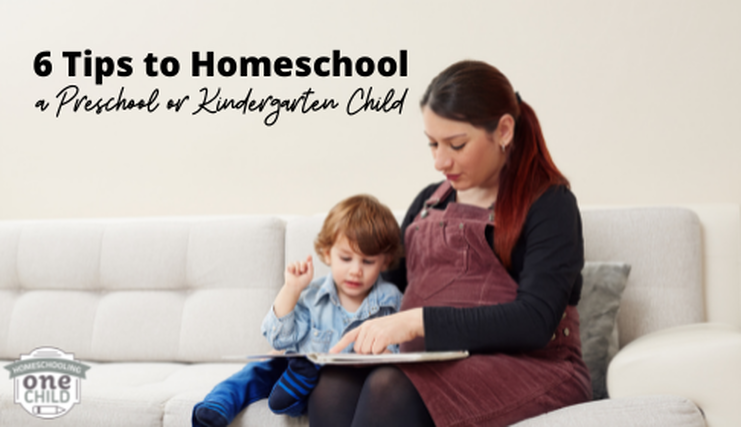

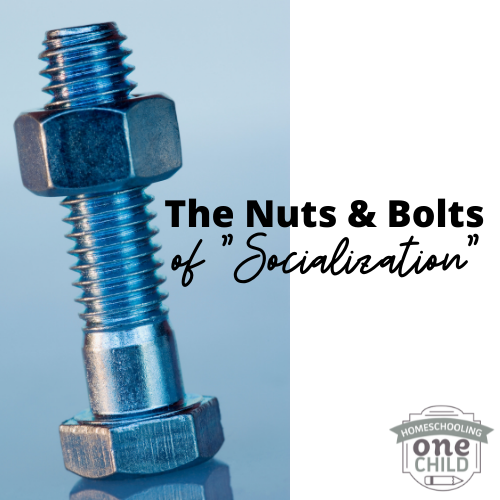


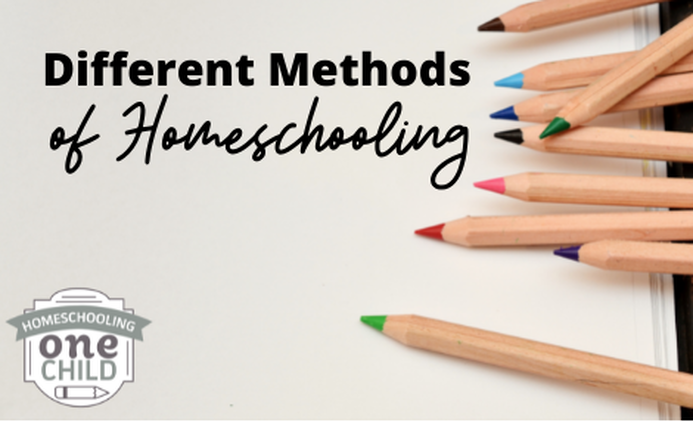
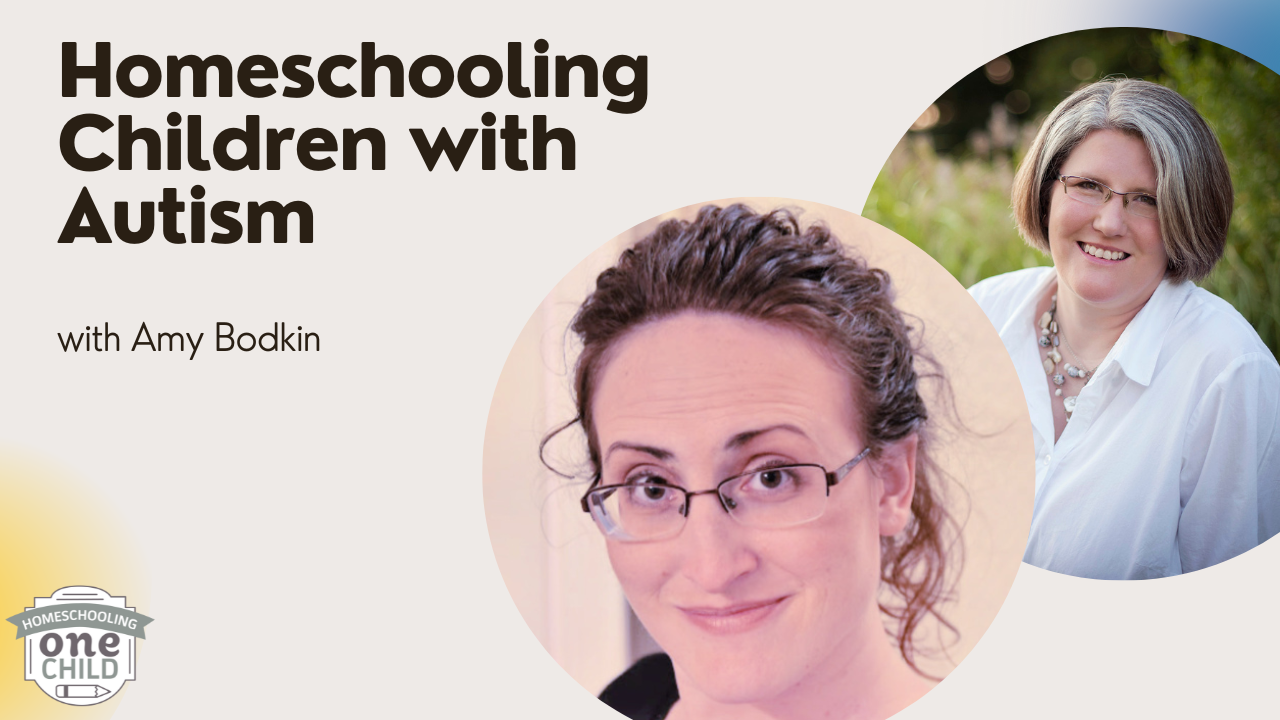


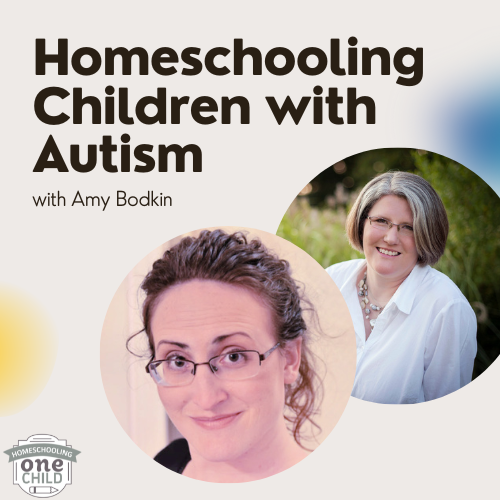
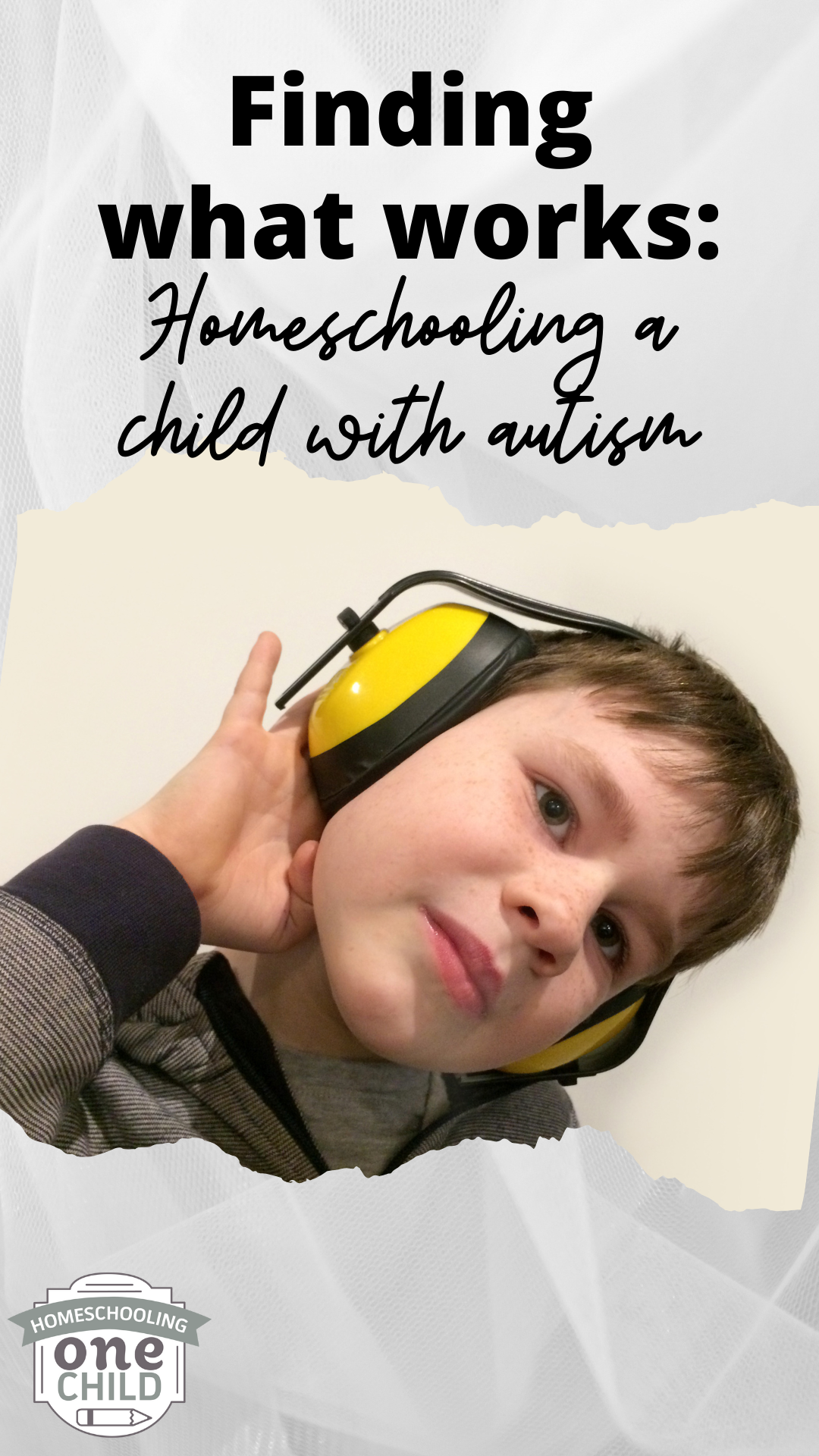
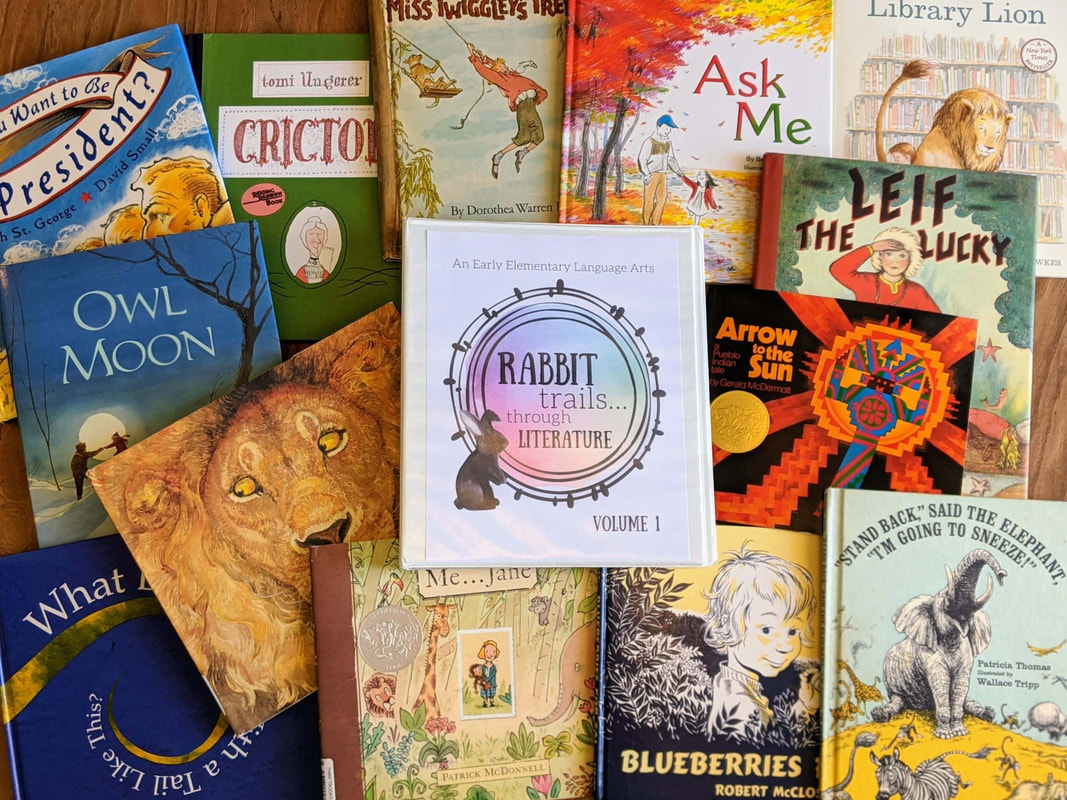
 RSS Feed
RSS Feed
